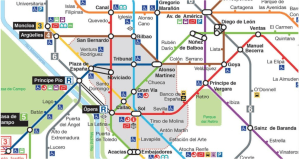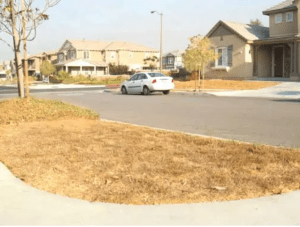Tips and Tricks and Learning New Things in Madrid
¡Hola a todes! ¡Bienvenido a vuelta a mi blog de sustanabilidad (translation: welcome back to my sustainability blog). I’ve now been in Spain for approximately 24 hours, and, my goodness, has it been a wild ride! I can’t remember the last time when I felt more overwhelmed—and I once moved across the country to live in a new city by myself! Not only are all of the sites and stores novelties to me, but I’m also just appalled at the sheer number of unfamiliar cultural nuances. Unfortunately, given this lack of knowledge, I keep embarrassing myself! It doesn’t help that I’m naturally a klutz (I somehow already managed to fall on the escalator at the Madrid Airport and burn myself on my host mom’s exhaust pipe within the span of a single day), but there are also so many little differences between Spanish and American ways of life that keep catching me by surprise. For instance, in case you ever find yourself in Spain, here are three important things you should know:
-
- In Spain, everyone has a virtual COVID-19 vaccination card. Similar to how you can add tickets and such to your Apple Wallet, the same goes for their proof of immunization. They each have little QR codes that a person can scan to ensure that their identities match the cards. Although there are some areas in the United States where our COVID-19 cards are online, I don’t think it’s nearly as prevalent. Thus, when I found myself in customs face to face with a man who kept questioning me about the status of my virtual immunization record, I found myself completely tongue-tied to the point where the man was convinced I did not know any Spanish. Talk about a humbling experience!
- The cars and roads are MUCH smaller and narrower than in the United States. Since I’ve been here, I have yet to see a single SUV or truck, which are both very common in California. (There are also no Teslas, which might have been an even bigger culture shock, especially coming from the Bay Area.) There isn’t much space for parking in the city, and the traffic can be pretty congested. As a result, many Spaniards prefer to take public transportation when traveling, and they have an excellent bus/Metro system. If you’ve ever spent time in Los Angeles, you’ll understand why this shocked me.

- Bring an adapter! Because I hadn’t ever spent much time outside of the United States, that little nugget of important information alluded me while packing, and I found myself in a country with none of the same outlets. Similarly, make sure you notify your bank before you travel about your plans, or you’ll end up like me—at the front of a line in a drug store with shampoo and conditioner but no way to pay!
Since arriving here, I’ve also gotten to witness some of the sustainability issues that I mentioned in my previous blog post (air pollution, heat waves, etc.) and have also been introduced to some new ones, like electricity shortages. As predicted, I can say with first-hand experience that Madrid’s issues of traffic congestion and poor air quality are real. My host mom lives directly next to a freeway, which faces my bedroom window. All day, I watch the cars come and go, witnessing the city’s daily struggle with vehicular traffic. Although most commuters can solve this issue in their own lives by simply taking public transportation, it remains unclear to me how this obstacle is affecting Madrid’s local climate. As for their air quality, this morning, I checked my phone before heading out for an early-morning run and saw that the city’s air had been labeled “unhealthy,” a great alert to see right before embarking on an hour-long excursion outside. (I think the poor air quality is mostly due to the recent fires throughout Europe.) It’s definitely a wake-up call to personally experience some of Spain’s sustainability problems that I had only read about previously, and I’m curious to learn more about these two issues as I spend more time here as well and to see how the city continues to handle them.

However, as I mentioned above, what I hadn’t known about was Madrid’s electricity problems. According to different news sites, Spain as a country declared that it would be limiting its energy consumption at the beginning of August, claiming that it wanted to reduce its dependency on Russian oil and gasoline, most likely due to Russia’s ongoing war with Ukraine.
Although I’m familiar with outages and power shortages in California (mainly due to heat waves and wildfires), the idea of a prolonged restriction on energy consumption is completely new to me. In California, people turn their lights on and off as they please, use the air conditioners liberally, and are not overly dependent on (or even inclined to use) public transportation. There have been a few instances in the past where communities were asked to reduce their water usage during droughts (mainly by no longer turning on their sprinklers), but that’s about it.

As I continue to spend more time here, I’m curious to see how these energy restrictions will develop. As it gradually becomes cooler and citizens feel less reliant upon air conditioning, will the government start to relax these regulations? Or, will they only get worse since more people will be returning to Spain (most people are away on vacation during August) and will want to start using their heaters? There’s so much I still don’t know and am hoping to understand in the coming months!
Fortunately, I’m currently signed up for at least one biology course—a marine ecology class—that will hopefully shed some light on Spain’s present sustainability issues. Classes start in a week and a half and, when they do, I’m excited to report back. Until then, ¡hasta luego! Hablaremos otra vez muy pronto.
Saludos, Maddie